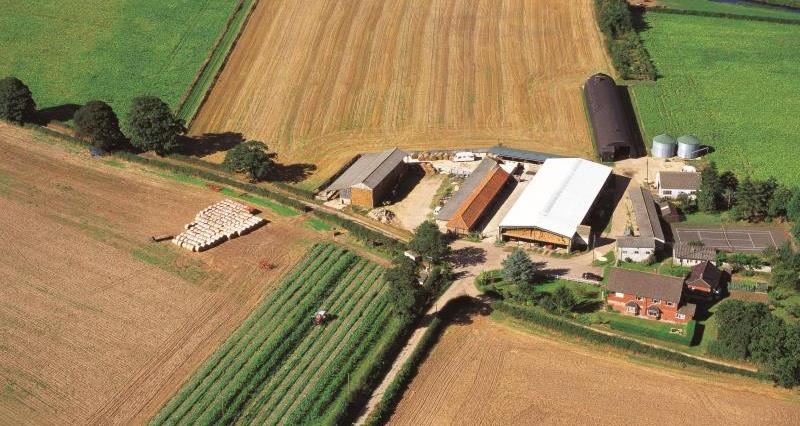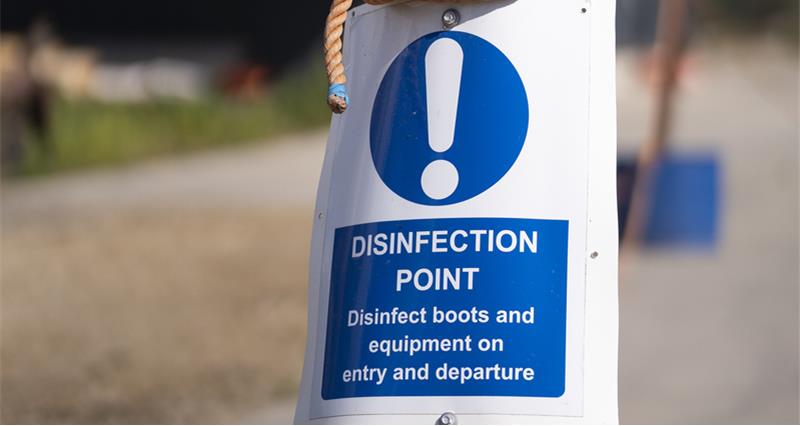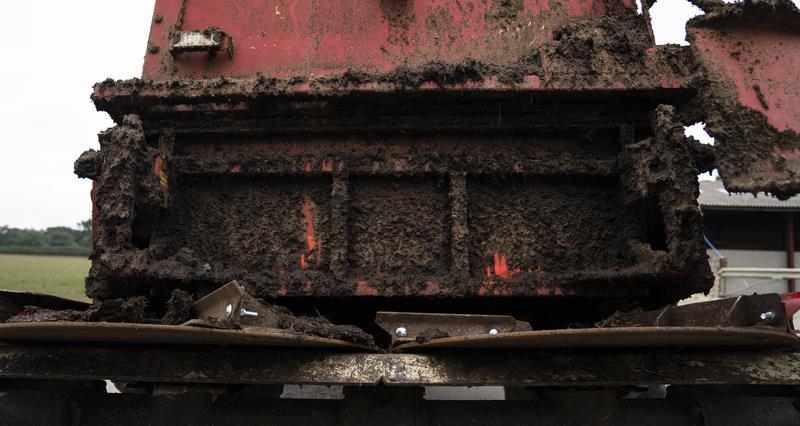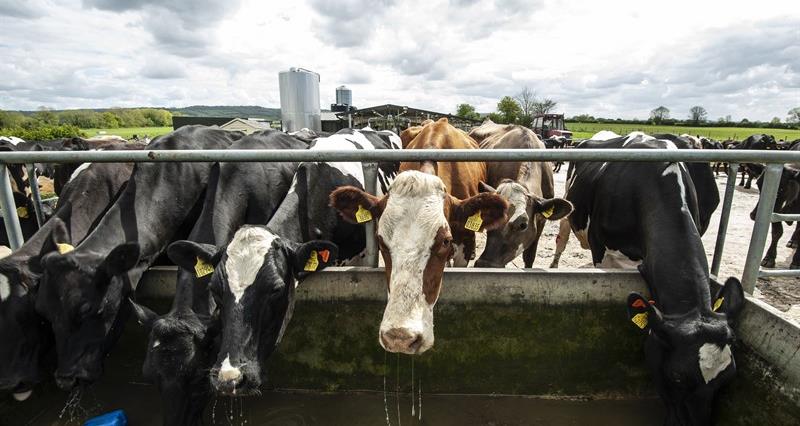How diseases enter a farm
This picture illustrates the potential disease entry pathways to consider on your farm:

Livestock
New or returning livestock from markets, shows, other farms, off-farm grazing grounds can bring new pathogens into your farm. Wild birds and wild animals pose a substantial incursion risk.
Vehicles and visitors
Diseases such as FMD can be transferred from one location to another on vehicle tyres and visitors’ clothes.
Consider deliveries and removals of feed, milk, livestock, carcasses and manure or other vehicles / equipment that have been on other farms and are allowed to drive in livestock areas or areas where livestock travels. Consider the location of your access roads and footpaths in relation to livestock location.
Don’t forget deliveries to your home.
Farm products and deliveries
These include feed and bedding, milk collections, semen and embryos.
All of these can carry pathogens and expose your livestock and your people to disease.
People
Farm workers, veterinarians, contractors and service deliverers (inseminators, foot trimmers, farm advisers, sheep shearers, salespeople) can be high risk, especially where they come into direct contact with your livestock.
The wider environment
Wildlife, wild birds, water sources and airborne routes can be hard to manage but should not be forgotten.
How diseases enter animals or people
If we understand how diseases spread to livestock or people, we can find ways to control and protect them from exposure.
Even though there are hundreds of diseases, they all have one thing in common – the livestock or human must be exposed to bacteria, viruses or parasites to get the disease.
Once we understand how disease-causing pathogens enter a body, we can put biosecurity steps in place to prevent exposure.
Some diseases are spread between livestock only.
Some diseases are spread between animals and people and are called zoonotic diseases.
Some diseases are spread by only one route, while others are spread by several.
For nearly all diseases, there is a relationship between exposure dose (how much) and severity of disease (how sick). For diseases that are always present (the endemic diseases), reduce the dose using separation and cleanliness biosecurity steps. These two concepts can be applied to most situations.
Below are descriptions of five different ways diseases can be spread to livestock or people, using cows as the example.
Direct contact
An animal carrying a disease could spread it to another animal or between different species when the pathogen touches open wounds, mucus membranes (e.g., eyes, gums) or skin through blood, saliva, nose-to-nose contact, rubbing or biting.
A animal can also spread diseases directly to her young through the uterus or during birth.
Mating male animals can spread diseases during mating.
Prevention involves separation. Examples include:

- Separating sick and newly introduced animals from healthy ones.
- Avoiding fence line contact between animals of different health or vaccination status.
- Testing animals for diseases of concern and removing them from the herd / flock before breeding.
- Ensuring animals used for breeding, semen or embryos come from high health status sources.
- Vaccinating for diseases spread by direct contact to make animals more disease resistant.

- Increasing the distance between sick and healthy animals, ensuring they do not share airspace or droplets.
- Providing appropriate ventilation and humidity levels between 50-75% for indoor housed animals to decrease the germ load in the air. (Bacteria survive better at warmer temperatures. Viruses survive better at colder temperatures.)
- Minimising overstocking or crowding animals of different health or vaccination status.
- Vaccinating for diseases spread by aerosol to make animals more disease resistant.

- Ensuring feed, water or anything that can be licked or swallowed is not contaminated.
- Pasteurising milk and colostrum to kill disease agents.
- Sourcing quality feed and storing it to reduce spoilage and rodent or wildlife access.
- Offering feed and water in raised bunks or troughs that prevent manure or urine contamination.
- Vaccinating for diseases spread orally to make animals more disease resistant.
- Using parasiticides labelled for use in food-producing animals and following withdrawal times for milk and meat.
Fomite (inanimate objects)
When an infected animal contaminates an inanimate object like a needle, person’s footwear, livestock trailer wheels or milking unit, the pathogen can be spread to other animals it touches. Manure, blood and calving fluids are common contaminants.
Prevention involves cleanliness. Examples include:

- Cleaning items used to treat, restrain or collect samples from sick animals.
- Using separate equipment for handling manure, dead animals or feed. Cleaning and disinfecting equipment between these different uses if separate equipment is not available.
- Wearing clean or dedicated clothing and footwear when handling young animals or working with them before older, sick or quarantined animals.
- Milking sick or quarantined animals last if separate milking facilities are not available.
- Cleaning livestock trailers between hauling older, sick or new animals and young stock or after hauling animals from another herd / flock.
Vector (organism, e.g. insect)
Insects, wildlife, rodents, wild birds and other animals like dogs and cats can spread pathogens to farmed livestock. This can happen mechanically (on the footpads or feathers) or biologically (insect bite or shed in faeces).
Prevention involves cleanliness. Examples include:

- Eliminating standing water where mosquitoes breed, or decaying organic matter (e.g., manure, old feed) where biting flies breed.
- Using topical, oral or injectable pesticides labelled for use in food-producing animals and following withdrawal times for milk and meat.
- Storing feed in bulk bins and putting milk replacer and young stock starter bags in sealable metal or heavy-duty plastic containers.
- Using rodent bait according to label directions can decrease the population.
Zoonotic diseases
It is important to consider the health of your staff and family members in addition to keeping your animals healthy.
Zoonotic diseases can spread between animals and people through the same ways described previously: direct contact, aerosol, oral, fomite and vectors.
Prevention involves cleanliness and separation. Examples include:
- Washing hands after animal contact or handling items contaminated with bodily fluids (e.g. faeces, blood, urine, saliva, birthing fluids, etc.).
- Washing hands before handling food or any items that may enter the mouth.
- Wearing barriers to prevent direct contact, aerosol, oral or vector spread.
- Gloves to protect chapped or cracked hands.
- Shoulder length disposable sleeves / gloves to protect arms.
- Protective eye wear to shield the eyes from splashes.
- Face shields to protect the eyes and mouth from splashes.
- Masks to protect from aerosolized dust or droplets.
- Long sleeves and trousers can protect from insect bites.












